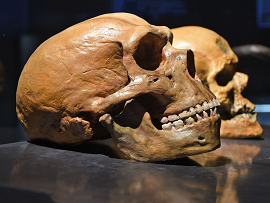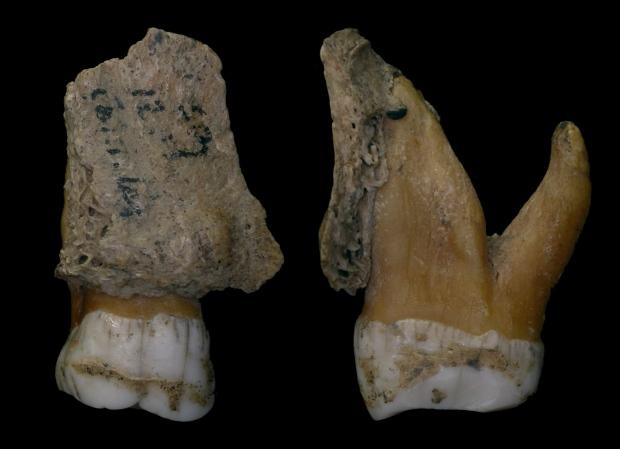
Ancient DNA found in the dental plaque of Neandertals – our nearest extinct relative – has provided remarkable new insights into their behaviour, diet history, including their advanced use of plant-based medicine to treat pain and illness.
Published today in the journal Nature, an international team led by the University of Adelaide’s Australian Centre for Ancient DNA (ACAD) and Dental School, with the University of Liverpool in the UK, revealed the complexity of Neandertal behaviour, including dietary differences between Neandertal groups and knowledge of medication.
 “Dental plaque traps microorganisms that lived in the mouth and pathogens found in the respiratory and gastrointestinal tract, as well as bits of food stuck in the teeth – preserving the DNA for thousands of years,” says lead author Dr Laura Weyrich, ARC Discovery Early Career Research Fellow with ACAD.
“Dental plaque traps microorganisms that lived in the mouth and pathogens found in the respiratory and gastrointestinal tract, as well as bits of food stuck in the teeth – preserving the DNA for thousands of years,” says lead author Dr Laura Weyrich, ARC Discovery Early Career Research Fellow with ACAD.
“Genetic analysis of that DNA ‘locked-up’ in plaque, represents a unique window into Neandertal lifestyle – revealing new details of what they ate, what their health was like and how the environment impacted their behaviour.”
The international team analysed and compared dental plaque samples from four Neandertals found at the cave sites of Spy in Belgium and El Sidrón in Spain.
“We found that the Neandertals from Spy Cave consumed woolly rhinoceros and European wild sheep, supplemented with wild mushrooms,” says Professor Alan Cooper, Director of ACAD. “Those from El Sidrón Cave on the other hand showed no evidence for meat consumption, but appeared instead to have a largely vegetarian diet, comprising pine nuts, moss, mushrooms and tree bark – showing quite different lifestyles between the two groups.”
“One of the most surprising finds, however, was in a Neandertal from El Sidrón, who suffered from a dental abscess visible on the jawbone. The plaque showed that he also had an intestinal parasite that causes acute diarrhoea, so clearly he was quite sick. He was eating a natural antibiotic mould (Penicillium) n, . . . .”
“Apparently, Neandertals possessed a good knowledge of medicinal plants and their various anti-inflammatory and pain-relieving properties, and seem to be self-medicating. The use of antibiotics would be very surprising, as this is more than 40,000 years before we developed penicillin. Certainly our findings contrast markedly with the rather simplistic view of our ancient relatives in popular imagination.”
Neandertals, ancient and modern humans also shared several disease-causing microbes, including the bacteria that cause dental caries and gum disease. The Neandertal plaque allowed reconstruction of the oldest microbial genome yet sequenced – Methanobrevibacter oralis, a commensal that can be associated with gum disease.
More information:Laura S. Weyrich et al, Neanderthal behaviour, diet, and disease inferred from ancient DNA in dental calculus, Nature (2017). DOI: 10.1038/nature21674